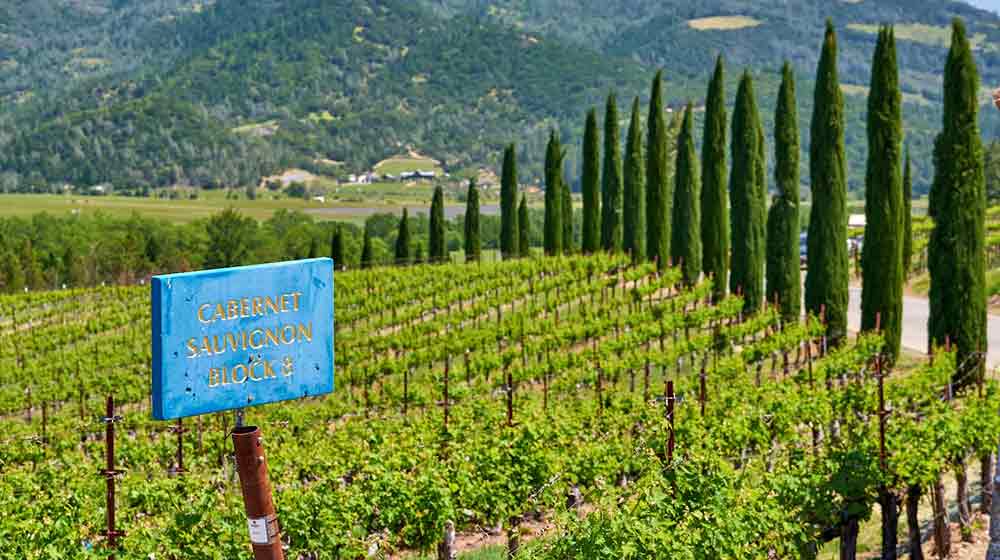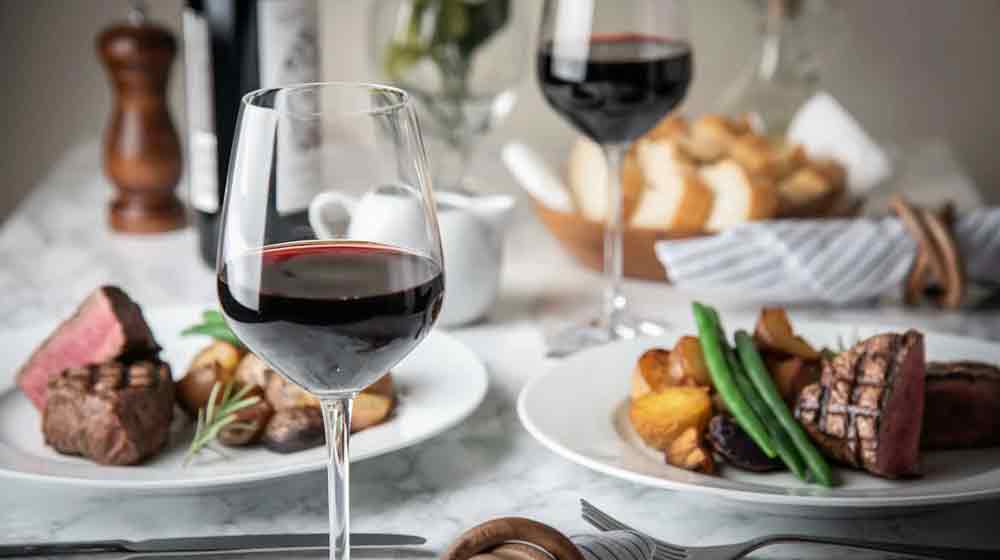CABERNET SAUVIGNON WINE GUIDE
WRITTEN BY SARAH TURNER

Where is Cabernet Sauvignon made?
Cabernet Sauvignon is one of the world’s most widely grown red wine grape varieties. Although it originally hails from the Bordeaux region of France, where it’s a key component in the region’s famous blends, it’s now grown in a wide range of wine-producing countries.
- France – In France, Cabernet Sauvignon is most famously grown in the Bordeaux region, particularly in the Left Bank areas of Médoc and Graves. Winemakers in the renowned appellations of Pauillac, Saint-Julien, Saint-Estèphe and Margaux make some of the world’s most coveted and age-worthy wines based primarily on Cabernet Sauvignon. It forms most of the Bordeaux blend from these areas, typically accompanied by Merlot and smaller proportions of Petit Verdot or Cabernet Franc. Over on the right bank, in appellations such as St. Emilion and Pomerol, Cabernet Sauvignon is used to add structure and depth to Merlot-based wines.
Beyond Bordeaux, Cabernet Sauvignon is also found in the Languedoc-Roussillon region in the south of France and in the Loire Valley, where it’s usually blended with Cabernet Franc to produce rosé and red wines. It is also grown in small quantities in other French wine regions, such as the Rhône Valley and Provence.

What foods pair well with Cabernet Sauvignon wine?
Cabernet Sauvignon is the perfect companion for various dishes thanks to its full body, bold fruit flavours and high acidity. Here are some of our favourite combinations:
Red meats – The wine’s strong structure and high acidity match the rich, hearty flavours, making it ideal for pairing with steaks and grilled lamb.
Herb-infused dishes – Foods featuring rich, aromatic herbs mirror the wine’s herbaceous notes.
Hearty stews – The robust flavours and often earthy components work well with the complex flavours in the wine.
Mature cheeses – Strong, aged cheeses such as cheddar or blue cheese contrast beautifully with Cabernet Sauvignon’s fruity core and acidity.
Mushroom-based dishes – Cabernet Sauvignon’s complex flavours complement the earthiness of mushrooms.

How long does it last unopened?
Unopened, it has a surprisingly good shelf life. Many bottles are best enjoyed within 3 to 5 years of their vintage, but high-quality versions can age beautifully for a decade or even longer. During this time, they can also develop complex tertiary flavours. The key to long-term storage is maintaining a consistent, cool temperature of around 10-15°C, reducing light exposure and keeping the wine bottle on its side to prevent the cork from drying out. Investing in a wine fridge can help you maintain consistent storage conditions. Not all Cabernet Sauvignons are designed for prolonged ageing, so it’s wise to do a little research on your specific bottle.



